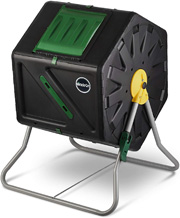The Five Minute Compost Bin
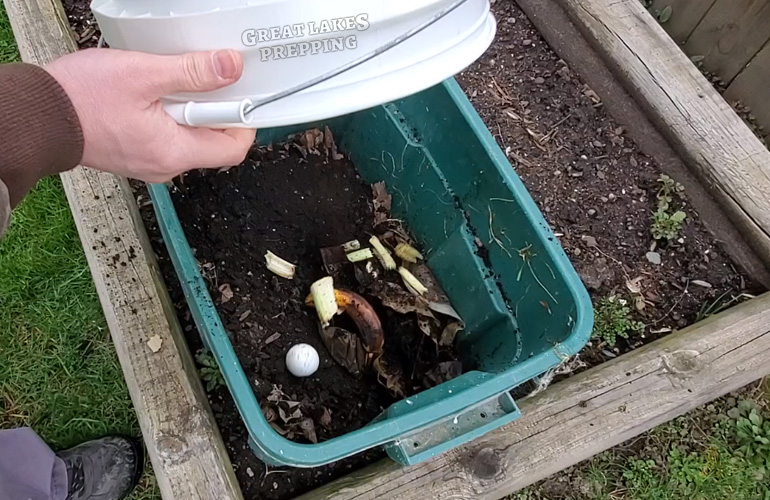
Composting for Beginners
Anybody who is interested in gardening, self-sufficiency, homesteading, or anything in between needs to start composting if they have not already started.
Why? Because it’s the absolute best way to get free fertilizer for your crops. With composting, you take garbage and turn it into nutrient-rich food for your plants. It doesn’t require synthetic chemicals. It doesn’t require anything except waste materials you’re already discarding, a container, and time.
Given enough time, any organic material will break down into compost. Using a compost bin and following some very basic guidelines simply speeds up the process. There are countless resources out there that discuss the merits and applications of composting. In this post, I want to simply show you how you can start small with very little energy and time. I will demonstrate how to take an ordinary plastic storage bin and start a batch of compost.
You can certainly use larger and more elaborate compost bins that many companies sell. I have used them and I have no complaints, but I also like a small bin like the one I use in this post, because it’s light enough that I can pick it up, shake it around, and eventually just pour it out into my garden beds. It doesn’t require shoveling or scooping. I can keep a few bins going at all times, each at varying stages of rotting/composting.
Don’t have an old storage tote? How about a leaky old plastic trash can (with lid)? Five gallon bucket? Practically any plastic container that has a lid, and that you are comfortable drilling holes into will work.
Some different compost bin styles available
Step 1
The first thing you need to do is find a container with a lid that fits relatively tight. I’m willing to bet you have some nasty old storage bin somewhere that you can sacrifice for the cause. I’ve had this ugly old Rubbermaid bin for over 20 years. It’s dirty and doesn’t match any of my newer storage totes, so it’s the perfect candidate. I’ll walk through the very simple steps to get your first compost bin going.
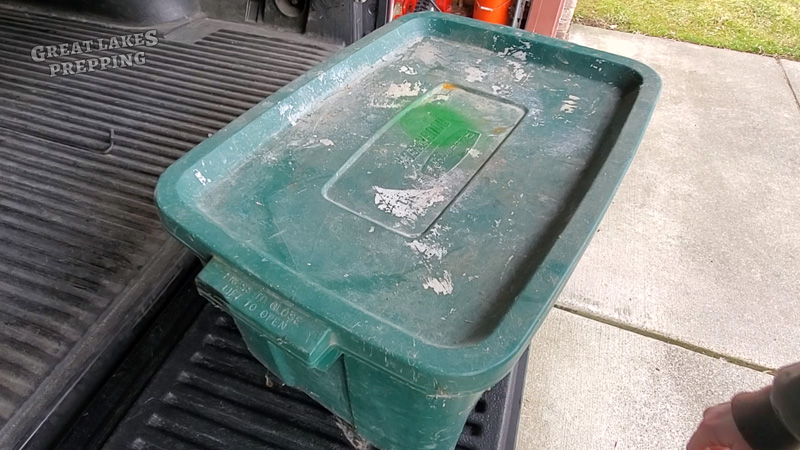
Step 2
Drill several small holes into the bottom of the container. I drilled somewhere between 15-20 holes. This is to allow for a bit of drainage if the compost gets too wet.
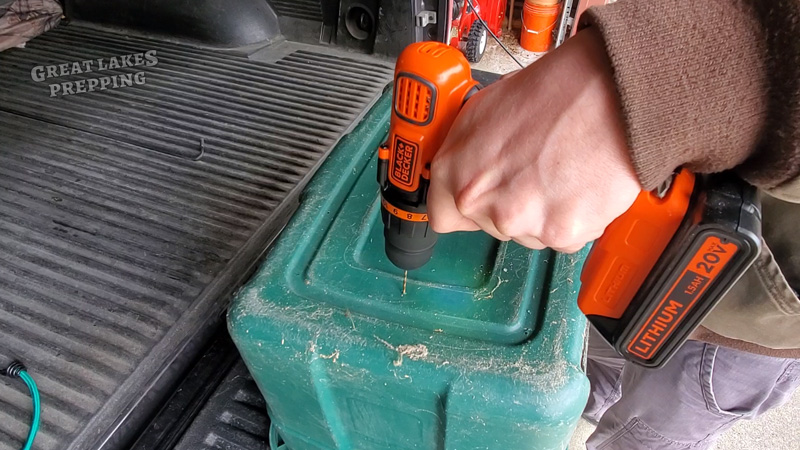
Step 3
Drill several small holes into the lid of the container. Again, somewhere around 15 holes. This is to allow a little bit of ventilation/airflow into the container.
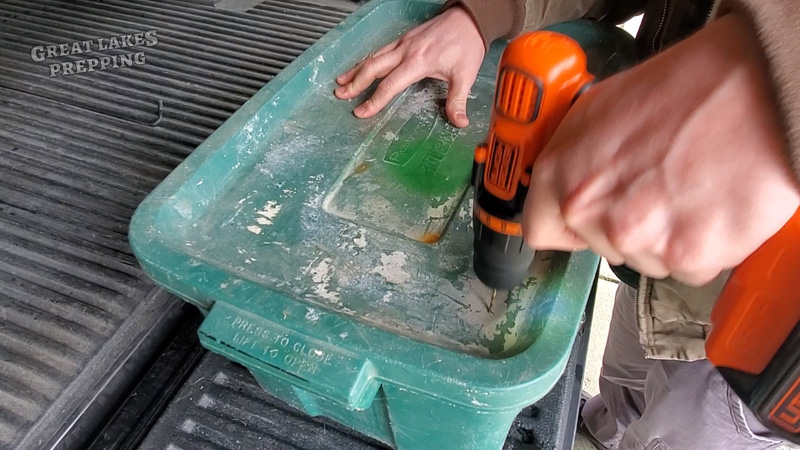
Step 4
Add some crumbled, dead, dry leaves. This is just to create a loose “base layer” to allow for drainage.
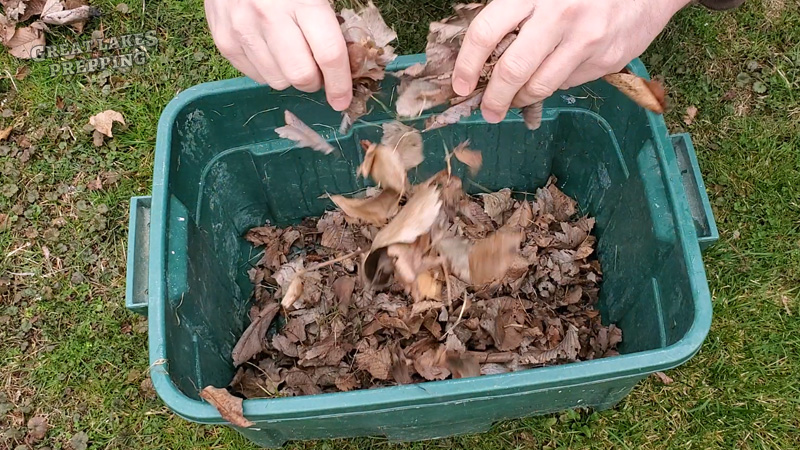
Step 5
Throw in some dirt. Any ordinary topsoil or dirt from your yard will work. Add enough to cover the leaves (just a couple inches deep).
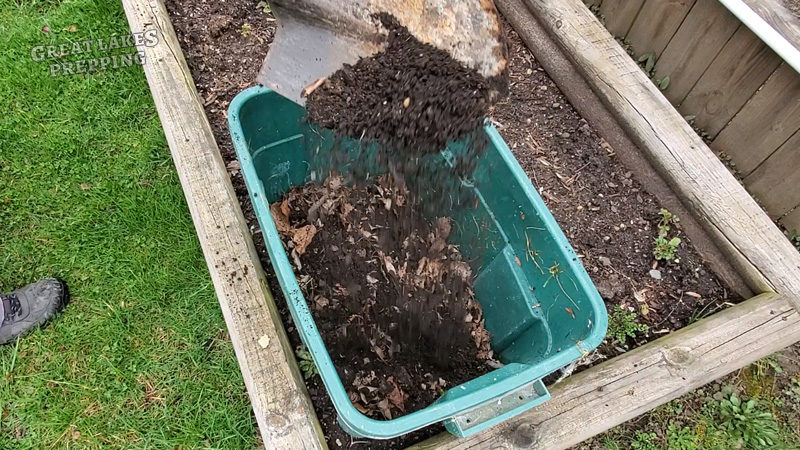
Step 6
Dump in whatever food garbage you have ready. Fruit/vegetable peels, egg shells, coffee grounds/filters, stale potato chips, dog hair. The list of compostable organic materials is very long. Just avoid meat, fats, or anything that will go completely rancid.
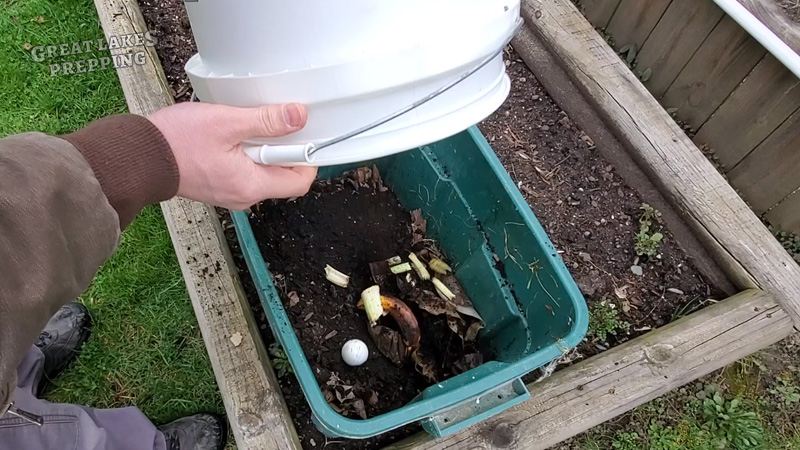
Step 7
Stir it up just a little bit. The objective is to mix the dirt with the compostable materials. Try not to disturb that layer of leaves too much.
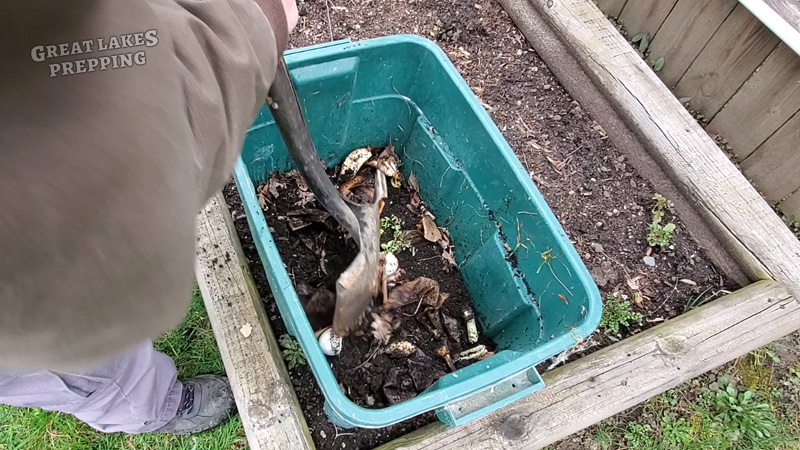
Step 8
Add just a splash of water. You can sprinkle a little water, or use the mist setting on your hose. Just enough to moisten the contents of the bin, but not so much that it’s sopping wet.
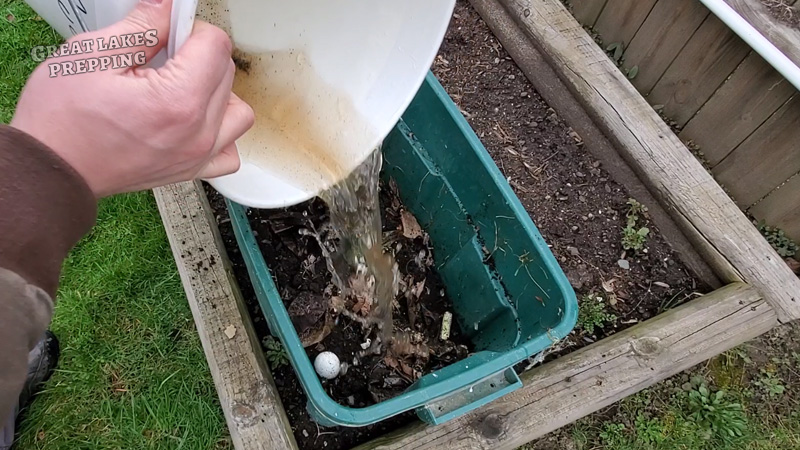
Step 9
Close the lid as tightly as it will allow. You don’t want critters getting in there, and a tight fit will aid in the decomposition process.
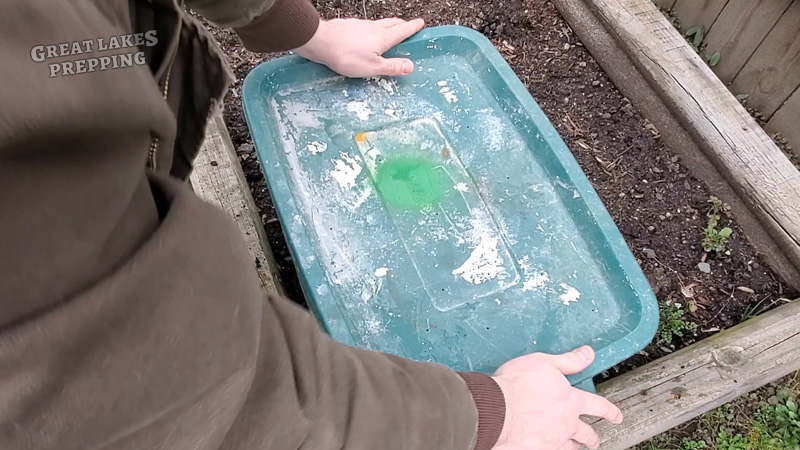
Step 10
Place the bin somewhere that gets a lot of sun.
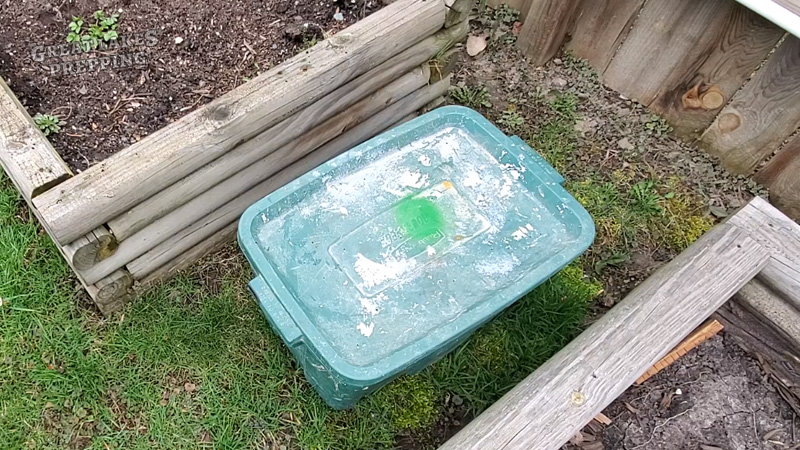
And that’s it! You’ve just started your first compost bin. Now in the coming days/weeks, throw your compostable materials in the bin as you accumulate them. You may need to add a little more dirt as you go. You want the dirt and organic waste incorporated. It doesn’t need to be a ton of dirt, but just enough to mix in with the organic materials. Also, if the bin contents become too dried out, you should re-moisten. Moisture will aid a lot in the rotting/composting process. Be sure to check this every week if you are getting a lot of sun.
And if your bin becomes too full, start another bin! If you find yourself filling it up pretty quickly, you might want to consider getting or making a bigger one. Depending on temperature and moisture, your compost could be ready to use in your garden in as little as a couple months.

